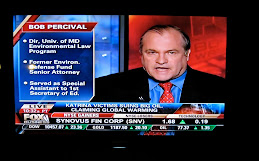Last week U.S.Senators Frank Lautenberg (D-N.J.) and David Vitter (R-La) announced that they had reached agreement on the Chemical Safety Improvement Act of 2103, bipartisan legislation to update the Toxic Substances Control Act (TSCA). TSCA was enacted in 1976 and it has not been comprehensively overhauled since then. The legislation is widely viewed as outdated in light of the EU’s REACH program that requires comprehensive testing of chemicals, which TSCA does not. Industry groups, including DuPont, expressed support for the proposed legislation which reportedly would give EPA more authority to review existing chemicals and to require new chemicals to be tested. EPA would evaluate all chemicals on the market as either a "high" or "low" priority based on risk analysis and high-priority chemicals would be subjected to further action. Environmental groups were cautious about endorsing the legislation, noting that it lacked deadlines and funding for EPA and that it was not as strong as the Safe Chemicals Act that Lautenberg had introduced last month. Serious concerns also have been raised about provisions in the legislation that would preempt state regulation of chemicals.
Russian scientists announced on May 24 that they have been forced to evacuate North Pole-40, an Arctic research station collecting climate data, because the ice it is built on is starting to break up unexpectedly early. Last September Arctic sea ice reached its lowest extent on record, 18 percent below the previous minimum that had been reached in 2007. Older and more durable sea ice, on which the station was built, has been shrinking. It made up 26% of the ice cover in March 1988, but only 7% in March 2012.
On Friday May 24 the editorial board of the Wall Street Journal weighed in on the amazing success story of an American start-up company that has developed new technology vaulting it to the forefront of its industry. The company has been so successful that its stock price is now nearly six times higher than it was at its initial public offering less than three years ago. On May 8 the company reported that it had earned its first profit and on May 22 the company repaid in full its $465 million loan from the federal government nine years before it was due. One would think that this American business success story would be cause for celebration by the Journal, but not so fast. The company is California-based Tesla Motors, which produces the all-electric Tesla S high performance automobile that I have been driving for the last two and a half weeks.
The editorial, “The Other Government Motors,” Wall St. J., May 24, 2013, at A12, portrays Tesla as an invention of government subsidies that is destined to fail. While the editorial notes that Tesla’s cars have received “rave reviews,” it does not specify that the Tesla S was named Motor Trend’s “Car of the Year” or that Consumer Reports declared earlier this month that it is simply the finest car they have tested in many years. It describes Tesla’s profits as “a function of government subsidy and coercion” because buyers qualify for the $7,500 federal tax credit for purchasing electric vehicles and Tesla can collect $250 million in zero emission vehicle credits from other automakers subject to California’s clean-car mandates. The editorial repeats Bjorn Lomborg’s canard that the environmental benefits of electric cars are overstated, but its most revealing criticism is that Tesla has made tons of money for rich liberal investors, many of whom it lists by name. It warns that Tesla’s success may be short-lived because major auto makers soon will have their own electric cars and will not need to buy emissions credits from Tesla, something Tesla already has factored into its financial projections. What seems to irk the Journal so much is simply that the success of Tesla’s technology sharply contradicts the right-wing narrative that green technology is destined to fail in the marketplace. How did Wall Street react to the editorial? On Friday Tesla’s stock rose more than $4/share hitting a new all-time high and closing above $97/share. Not bad for a company whose stock debuted at $17/share in its June 2010 IPO.
This is not to say that all green technology ventures will be winners in the marketplace; many likely will fail, particularly since we do not have a carbon tax that would internalize the true costs of using fossil fuels. On May 26 Better Place, a company that five years ago announced plans to turn Israel into a mecca for electric cars through quick-service battery-swapping stations, announced that it had filed for liquidation. Approximately $850 million had been invested in the company, which initially forecast that 100,000 electric cars would be on the road by 2010. Today there are estimated to be fewer than 1,000 electric cars on the road in Israel. The failure of this venture and Fisker’s problems seem to stem from lack of public enthusiasm for their technology -- something that has not been a problem for Tesla -- making it all the more curious that Tesla would be singled out for attack by the Journal’s editors.
On Saturday May 25 the Wall Street Journal editors were decrying the lack of accountability in China’s legal system that has produced weak enforcement of Chinese environmental laws, citing the discovery of cadmium contamination in Chinese rice. China’s Toxic Rice Bowl, Wall St. J., May 25-26, 2013, at A12. The editorial also decried “American elites who like to praise China’s government as a green model.” At the risk of being considered one of those, I should point out that on May 24 the Chinese government sent a draft of a proposed Environmental Protection Tax Law to industry associations for their review. The proposed law would establish a carbon tax while raising the level of other existing pollution charges in China. The Journal editors are correct that it is important to have strong accountability mechanisms to ensure enforcement of the environmental law, like the citizen suit provisions of the U.S. environmental laws, something that they have not been a fan of when used in the U.S.

















